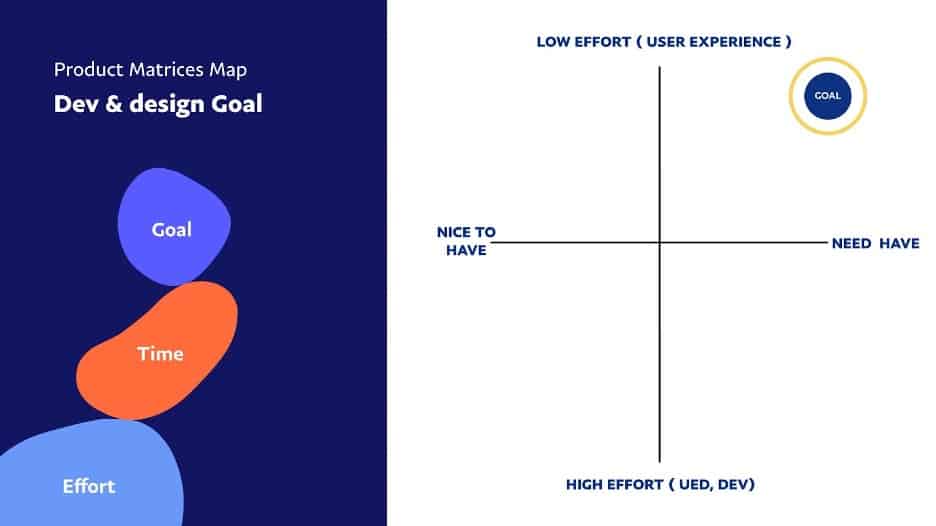Introduction
Daily, I collaborate with stakeholders to build products that address customer needs, which presents both opportunities and challenges. Not only does each stakeholder bring diverse viewpoints to the table, but each stakeholder’s viewpoint also brings conflicting priorities and potential barriers to communication. Thus, establishing a unified vision for the product becomes our priority. In this essay, I will demonstrate a useful tool and strategy to foster collaboration and a unified vision that is drawn from my firsthand experiences.
Navigating UX Designer Challenges
Navigating challenges is both dynamic and demanding. My responsibilities span a wide spectrum that encompasses research, wireframing, prototyping, and collaboration with stakeholders to translate ideas into tangible designs. While exhilarating, this transition from concept to realization presents considerable complexity within the realm of product design.
In tech companies, design tasks often arrive from various teams and leadership, occasionally without a comprehensive idea evaluation prior to entering the design phase. This practice can lead to discrepancies between product, design, and engineering units. The primary challenge for designers is establishing aligned goals. As UX designers, we focus on crafting seamless user experiences that elegantly solve customer issues while ensuring the product’s excellence. To achieve these objectives, proper time and resources are vital. Yet, in the face of overlapping design requirements, thorough evaluation sometimes falls short, impacting effective prioritization. Without a robust prioritization framework, design efficiency falters.
For product managers, outcomes and revenue are paramount. Though often sharing roadmaps, these plans can lack comprehensive evaluation and prioritization from the UX and customer perspective. Product managers occasionally make feature additions based on hypotheses and assumptions, focusing on that outlook rather than considering in detail how the addition affects the user experience. The resulting misalignment blurs the direction and purpose of the product. To overcome this, product managers need an expanded understanding of problems to foster better decision-making.
From the development standpoint, technical feasibility is pivotal. This perspective introduces a challenge in the form of resistance to change. Engineers might hesitate to embrace new designs or features due to technical concerns and the potential impact on timelines. This consideration, while essential for technical harmony, might not always align with user experience and product strategies.
Striving for optimal customer experiences unites us, yet distinct perspectives can foster differing goals. The triumvirate of UX design, product management, and engineering necessitates harmonization to navigate these challenges. Crafting a shared product vision, aligning efforts, and integrating varied perspectives at the same time remains a paramount daily pursuit within the dynamic workplace of tech companies.
The Solution: Product Matrices Map

Figure 1: The Product Matrices Map showing the three circles of effort, time, and goal.
After I explored the product and engineering teams’ perspectives in dialogue, a vision formed: a powerful collaboration tool was needed to enhance team cohesion and goal alignment. I developed a customized Product Matrices Map (PMM) to orchestrate seamless communication among designers, product managers, engineers, and all stakeholders to drive efficient goal alignment.
The PMM is structured around two axes: the Y-axis (vertical line) quantifies a metric’s impact on the product, whereas the X-axis (horizontal line) measures the effort required for measurement and improvement. Within the map, three categories provide insight from the engineering, product management, and user experience perspectives. When we prioritize features with stakeholders, a holistic consideration of these matrices focusing on high-impact and low-effort tasks enhances the efficiency of prioritization and fosters better mutual understanding among team members. How can we prioritize work considering the diverse perspectives of product management, user experience, and development?
The Product Management Perspective

Figure 2: A visualization of the Product Matrices Map illustrating product goals with effort (X-axis) and impact (Y-axis).
As a UX designer, my collaboration with product managers is pivotal in delivering successful products. Although new ideas often originate from the product management side, ensuring that these ideas are not merely suggestions is essential. At a tech company, efficient prioritization with product managers is a cornerstone of my role. The Product Matrices Map is an incredible tool that helps align our goals and streamline our work processes.
Understanding the PMM from the product management perspective is crucial to make prioritization more effective. In the Matrices Map, the X-axis represents how product managers perceive a feature’s level of effort. High effort indicates a more time-consuming and resource-intensive task, whereas low effort implies a simpler implementation. The Y-axis represents the expected impact of the feature, with higher impact being more desirable.
Ideally, we aim for features that fall into the first quadrant, low effort with high impact. These are our top priorities. Features falling into the second quadrant, high effort and high impact, are also important and warrant attention. If a feature doesn’t fit into either of these quadrants, it’s time for a conversation with the product manager to reevaluate and ensure alignment. This approach allows us to prioritize effectively based on the product management perspective.
The Engineering Perspective

Figure 3: A visualization of the Product Matrices Map illustrating development goals with nice-to-have to need-to-have on the X-axis and low to high effort on the Y-axis.
At PayPal™, the collaboration between design and development is essential to navigate complex product development. A significant challenge we often encounter is determining the most impactful areas to focus our efforts. To address this, we adopt an engineering perspective by leveraging a PMM. This approach enables us to align our objectives with quantifiable data to ensure our design and product decisions are rooted in empirical insights. The Y-axis represents how developers feel about the task based on their capability and constraints. An amazing UX idea can spark additional ideas that ultimately require more effort. Prioritizing the work becomes a challenge. Using a tool such as a product metric map helps us visualize what we want to accomplish. The X-axis shows need-to-have and nice-to-have categories to represent how developers feel about the idea. When we discuss an idea, designers need to be able to have empathy and understand how engineering feels about it. Sometimes, engineers can present the related technical issues to help designer and product teams better achieve the goals.
Our primary objective is to concentrate on the first and second quadrants of the matrix map, emphasizing low effort and need-to-have features. The need-to-have features align with Phase 1, while the nice-to-have features may be considered for Phase 2 or beyond. It’s vital to recognize that prioritizing essential features and reducing development efforts are pivotal in enhancing overall work efficiency for everyone involved.
This dynamic collaboration empowers us to make informed decisions, optimize our workflow, and deliver products that not only meet user needs but also align with overarching business goals. By uniting with the engineering perspective, teams create a powerful synergy that drives innovation and maximizes the impact of our work.
The User Experience Perspective

Figure 4: A visualization of the Product Matrices Map illustrating user experience design goals with nice-to-have to need-to-have on the X-axis and low to high effort on the Y-axis.
Speed and efficiency are paramount in dynamic designs for a major tech company. Efficient prioritization is the linchpin to our success. The Product Matrices Map is a powerful UX designer’s tool for refining priorities alongside stakeholders. Here are my recommendations for designers.
Start with your vision: As a designer, your perspective is unique. The Product Matrices Map isn’t just about numbers; it’s about conveying your viewpoint to stakeholders, from product managers to developers. Step one is your project evaluation. When I’m handed a bundle of projects, I first delve into each. Sometimes, the allure of nice-to-have features can be strong, but I’ve learned to balance it. These extras often necessitate deeper research and resources. So, project selection is a blend of necessity and impact.
Add weight: The magic happens when we blend our insights with the PMM. Assembling content design and research into the equation, we place weight on each project. Effort-wise, we’re after features that are easy to accomplish at the beginning so we can allow space for crucial projects to rise in priority.
The PMM amplifies our voices by fusing data and vision. It’s our compass for smarter, stakeholder-aligned prioritization, which ensures our design journey is both impactful and efficient.
Optimizing Your Use of the Product Matrices Map
Start with smart setup: Schedule quarterly collaborative sessions with your stakeholders. This teamwork-driven approach enhances work prioritization using the PMM. But before you begin, prepare your project with your perspective in mind. Understand the problem you’re tackling, ascertain why the project matters, and gauge the effort needed based on your team’s current dynamics.
Ace communication: The PMM can function as a communication tool. Balancing design prowess with clear communication skills is essential. The PMM empowers stakeholders to grasp your perspective and appreciate the time, effort, and limitations behind your design. Effective communication bridges gaps when working across functional teams to ensure everyone has the same expectations.
Empathy rules: Recognize that perceptions differ. What you perceive as effort may contrast with your stakeholders’ viewpoints. That’s natural, given that each person leverages their expertise to estimate workloads. While you might master design, technical intricacies might not be your forte. Here’s where the PMM shines: It guides you in determining the best features based on diverse perspectives.
RICE method: The RICE method streamlines prioritization within your team by considering four key factors: Reach, Impact, Confidence, and Effort (“Rice Scoring Method,” 2022). To apply it effectively, assess how many users a task will impact (Reach), the significance of its influence (Impact), your confidence in its success (Confidence), and the resources required (Effort). By assigning numerical values to these factors, you can quickly prioritize tasks with your stakeholders. High RICE scores, reflecting broad reach, significant impact, high confidence, and manageable effort, should be your primary focus. This method promotes data-driven decisions, team alignment, and resource optimization for maximum impact on your objectives.
The PMM is your compass, steering you toward collaborative, efficient work prioritization that bridges perspectives and enriches results.
What Are the Benefits of Using a Product Matrices Map to Prioritize Work?
Implementing a PMM in the prioritization process of a big tech company offers multiple benefits. First, it provides a clear and objective framework for decision-making that enables teams to align their efforts with measurable goals and outcomes. This data-driven approach enhances transparency and fosters better communication and understanding across cross-functional teams. By focusing on key matrices, teams can effectively prioritize tasks and features that have the most significant impact on user satisfaction, engagement, and overall product success. Additionally, the PMM empowers teams to identify potential bottlenecks, optimize workflows, and allocate resources more efficiently, ultimately leading to increased productivity and faster product iterations.
PMMs also aid in risk mitigation by allowing teams to pivot or adjust strategies based on real-time data and insights to ensure that the product remains adaptive and responsive to evolving market conditions. In essence, using a Product Matrices Map not only streamlines decision-making but also enhances collaboration, drives innovation, and contributes to creating exceptional products within a dynamic big tech company.
Sources
“Rice Scoring Method.” Productfolio (blog), January 6, 2022. https://productfolio.com/rice-scoring/#:~:text=RICE%20is%20an%20acronym%20that,prioritized%20and%20in%20which%20order
Zilin Zhou is a product designer at PayPal building human-centered experiences to positively impact people's lives. His goals are to utilize the power of design to connect concepts, cultural moments, and people in a compelling way. He seeks inspiration from observation, conversation, and formal design research to stretch his perspective.

